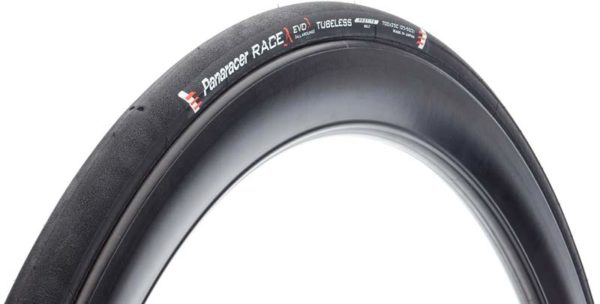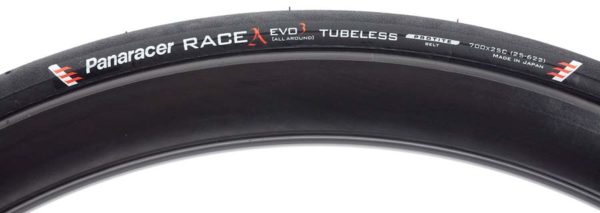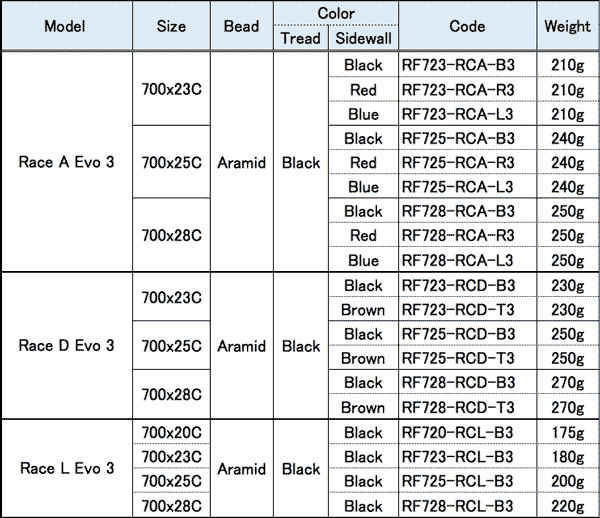Over the past few years of tradeshow visits, we’ve continually asked the holdouts like Continental, Michelin, Mavic and, yes, Panaracer, when they’re going to finally have road tubeless tires available. One of the main reasons cited by all of them is a lack of standards for the rim-and-tire interface, particularly with regard to tire bead retention in the event of sudden, rapid pressure loss. Considering the speed of movement and very uncomfortable landing surface (not to mention cars flying by), it’s a pretty important concern that the tire stay on the rim if you flat.
Now, finally, Panaracer has jumped into the modern mix with the all-new EVO3, and they’ve done the best they can to design the tire around current rims to ensure it stays put…
“We looked at the bead material,” says Jeff Zell, Global Go-To Guy for Panaracer (yes, that’s his actual title). “We looked at carbon fiber and kevlar, but needed something that wasn’t going to get too bent out of shape when people are installing it. Since there’s no standard for either tires or rims, we needed something that would work with the wide variety of shapes and designs out there. And we wanted it to work easily with as many as possible. What took the longest was finding the right combination of bead material that offered both rigidity and flexibility while creating a solid seal against the rim that would stay there.
“We wanted to be able to make something that would work with everything, but we can’t guarantee that since there’s no standard.”
The bead material is ProBead and is a proprietary, man-made material they created in the lab. It’s a little less rigid than Kevlar, but because they make it themselves it’s more reliable than the various sources of Kevlar that can be found across the tire spectrum. There’s no variance from batch to batch, which means tolerances are tighter from tire to tire. The bead is then wrapped in the tire’s normal rubber and has a slight tear drop shape rather than a squared-off design. They tried that, and other shapes, but settled on this shape because it worked across the broadest range of rims out there. Zell said the square design would offer a really good fit on some tires, but it was very difficult to install, and a purely round bead wouldn’t really “pop” onto the rim and seat correctly.
The EVO3 is the successor to their EVO2, becoming the top-level road tire from Panaracer. Upgrades from the EVO2 are that the ProTight gets a 25% increase in cut and puncture resistance. Rubber compounds and casings are the same as before.
It’ll be available in standard clincher with all the variations shown above for $59.99. The different versions break down as follows:
- A = all around, ProTight puncture protection shield that’s about 2.5x more protective than a standard Kevlar belt, and it’s actually molded into the tire’s construction as opposed to being a separate layer, so it deforms more easily for less rolling resistance. It’s a Shield (bead to bead) on the clincher, and just a Belt (under tread only) on the tubeless ready tires, which kept them more supple.
- D = Duro, high performance and durable all around tire that adds a little more sidewall reinforcement without making it too stiff.
- L = Light, race day crit race tire with ProTight belt only under the tread.
To make the tubeless ready versions, they added a butyl liner inside the casing, which lets it hold air with or without sealant. That adds about 55g to 75g per tire depending on size, and they’ll only be available in the “A” series initially. Those will retail for $89.99 and are available now in 700×23 (280g) and 700×25 (298g). A 700×28 should be available later this summer.
Both standard and TR versions use their ZSG dual compound tread and All Contact shape to ensure cornering grip no matter how far you lean the bike. A soft, woven casing keeps the tire supple for better traction and reduced rolling resistance.
Zell said they tested it on more than 30 popular rim/wheel brands. “We had great success with tubeless-ready alloy rims from Shimano, Fulcrum, Easton, Reynolds, Stan’s and Velocity. Some carbon rims worked OK, but we generally found things worked better with the alloy rims because the rim bed shape is better developed for tubeless. Carbon is still coming along, tubeless technology on aluminum rims is a little more mature.”


